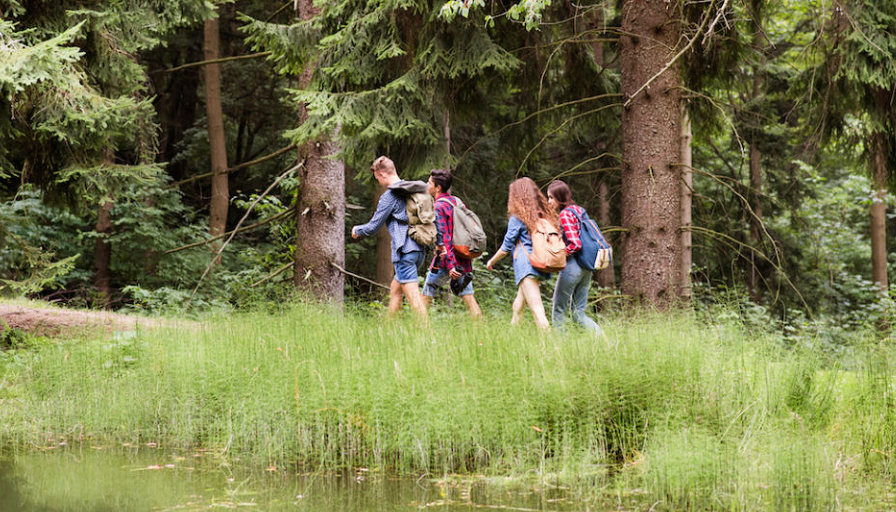
Imagine walking through a quiet forest, sunlight streaming through the leaves, the scent of pine in the air, and the rhythmic sound of your footsteps grounding you in the moment. Now picture returning to your desk with a head full of fresh ideas and a newfound sense of clarity. This isn’t just a daydream—research shows that taking a walk in nature can profoundly impact your creativity and cognitive function. Whether you’re tackling a tough project or brainstorming your next big idea, stepping outside might be the mental reset you didn’t know you needed.
Contents
- The Connection Between Nature and Creativity
- How Nature Walks Stimulate the Creative Brain
- The Psychological Benefits of Being in Nature
- Practical Tips for Incorporating Nature Walks Into Your Routine
- Real-Life Success Stories: Creativity Fueled by Nature
- Nature Walks vs. Urban Walks: Is There a Difference?
The Connection Between Nature and Creativity
The bond between humans and nature runs deep, rooted in evolutionary history. Our brains are hardwired to respond positively to natural environments, which provide a stark contrast to the overstimulating digital world we inhabit today. Studies indicate that exposure to green spaces can enhance divergent thinking—a key component of creativity that involves generating multiple solutions to a single problem.
A 2012 study published in the journal PLoS ONE found that participants who spent four days immersed in nature, disconnected from technology, experienced a 50% boost in creativity. While you might not have four days to spare, even a short nature walk can trigger this effect, helping you think more freely and solve problems more effectively.
How Nature Walks Stimulate the Creative Brain
What is it about nature walks that sparks creativity? It boils down to how they affect the brain. Here are some key mechanisms:
Reducing Mental Clutter
In urban and digital environments, your brain is bombarded with stimuli—emails, notifications, traffic noises, and advertisements—all competing for your attention. This “cognitive overload” leaves little room for creative thought. Nature, by contrast, offers a restorative experience that calms the mind and clears away mental clutter, making it easier to think creatively.
Enhancing Mood and Reducing Stress
Stress and anxiety are creativity killers. When you’re overwhelmed, your brain shifts into survival mode, prioritizing immediate concerns over imaginative thinking. Spending time in nature lowers cortisol levels and boosts endorphins, creating an emotional state conducive to innovation and fresh ideas.
Encouraging Mind-Wandering
Have you ever noticed how your best ideas come to you in the shower or during a leisurely walk? That’s because these activities encourage “mind-wandering,” a mental state where your thoughts flow freely without focusing on a specific task. Nature walks provide the perfect backdrop for this phenomenon, allowing your subconscious mind to connect dots and generate creative insights.
Boosting Brain Connectivity
Physical activity during a nature walk enhances blood flow to the brain, promoting better neural connectivity. This improves problem-solving skills and enables different areas of the brain to collaborate more effectively—critical for creativity and innovation.
The Psychological Benefits of Being in Nature
Beyond creativity, nature walks offer a host of psychological benefits that indirectly support cognitive performance. Here are a few:
Improved Focus
Nature acts as a gentle stimulant, engaging your attention without overwhelming it. This phenomenon, known as “soft fascination,” replenishes your mental resources and improves focus—a vital precursor to creative thinking.
Greater Emotional Resilience
Spending time outdoors fosters a sense of perspective and gratitude, which can help you bounce back from setbacks. Emotional resilience is essential for creative pursuits, as it allows you to experiment, take risks, and learn from failure.
Reduced Mental Fatigue
Prolonged mental effort can leave you feeling drained and uninspired. Nature walks combat this by rejuvenating your mind, helping you return to your work with renewed energy and enthusiasm.
Practical Tips for Incorporating Nature Walks Into Your Routine
If you’re ready to harness the power of nature walks for creativity, here are some practical ways to get started:
- Find a Nearby Green Space: You don’t need a sprawling forest to benefit—local parks, gardens, or even tree-lined streets can work wonders.
- Schedule Walk Breaks: Build short walks into your day, such as during lunch breaks or between study sessions, to recharge your brain.
- Unplug During Walks: Leave your phone in your pocket or switch it to airplane mode to fully immerse yourself in the natural environment.
- Observe Your Surroundings: Pay attention to the sights, sounds, and smells around you to deepen your connection with nature and spark inspiration.
- Experiment with Journaling: Bring a notebook to jot down any ideas or insights that come to you during your walk.
Real-Life Success Stories: Creativity Fueled by Nature
Many creative individuals credit nature with inspiring their best work. For example:
- Albert Einstein: Known for his long walks in nature, Einstein often said that these outings helped him untangle complex problems and generate new ideas.
- Virginia Woolf: The famous writer frequently walked in the English countryside, drawing inspiration for her literary masterpieces.
- Steve Jobs: The co-founder of Apple was famous for conducting walking meetings, believing that movement and nature spurred creative thinking.
These examples highlight how even brief interactions with nature can unlock new levels of innovation and productivity.
Nature Walks vs. Urban Walks: Is There a Difference?
While any form of walking can benefit your brain, studies suggest that nature walks offer distinct advantages over urban walks. A 2015 study published in Proceedings of the National Academy of Sciences found that participants who walked in natural settings experienced less anxiety and rumination compared to those who walked in urban environments. The calming effect of nature enhances the creative process in ways that busy streets often cannot.
That said, if nature is out of reach, even a stroll through a quiet neighborhood or a campus walkway can provide some cognitive benefits. The key is to step away from screens and give your mind a chance to recharge.
Nature walks are more than just a pleasant pastime—they’re a powerful tool for boosting creativity, reducing stress, and enhancing overall brain health. By stepping outside and immersing yourself in the natural world, you create the perfect environment for your mind to wander, connect ideas, and generate innovative solutions. Whether you’re brainstorming for a class project or seeking inspiration for a personal passion, the path to creativity might just be a walk in the park. Lace up your shoes, head to the nearest green space, and let your imagination flourish.

